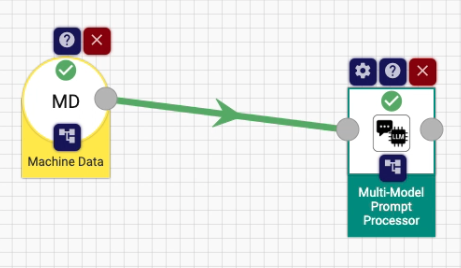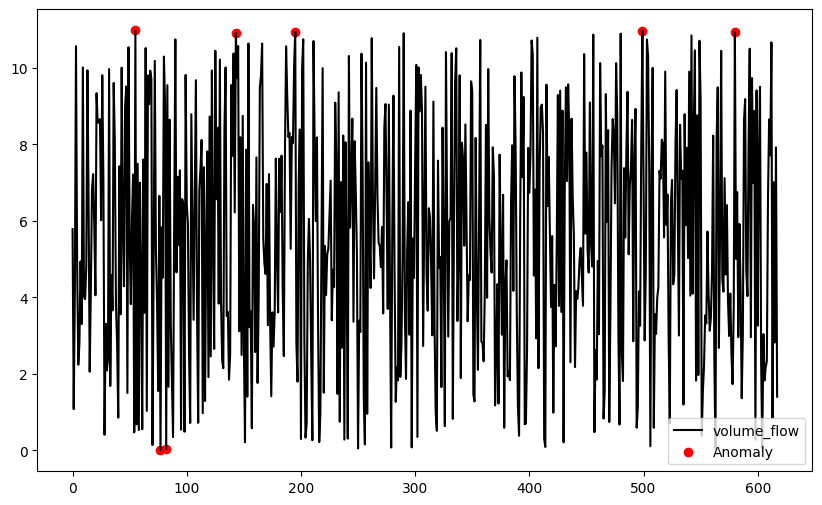Integrating industrial sensors into IIoT architectures often poses significant challenges—especially for IT teams unfamiliar with traditional operational technologies (OT). The complexity of fieldbus protocols, bespoke integrations, and vendor lock-in can create significant barriers to digital transformation on the shop floor.
Secure OPC-UA Integration with Apache StreamPipes: A Comprehensive Guide
With the release of Apache StreamPipes 0.97.0, the OPC UA adapter now supports encrypted communication using certificates, enhancing security for Industrial IoT applications. This guide walks you through generating certificates, configuring them in StreamPipes, and setting up your OPC UA server for secure communication.
Usage-Based Maintenance with Apache StreamPipes
In many manufacturing settings, maintenance is still scheduled at fixed time intervals — often based on past experience rather than actual machine usage. This approach can lead to unnecessary servicing or, worse, unexpected breakdowns. A common limitation is that many machines, especially older ones, offer only minimal sensor data, making advanced maintenance strategies seem out of reach.
Bringing LLM Power to Every Pipeline – The Multi-Model Prompt Processor

Need a quick sentiment check, a rolling summary, or a safety rule that’s just a bit too fuzzy for SQL?
With the Multi-Model Prompt Processor you can drop the full might of OpenAI, Anthropic, or your own Llama into any
Apache StreamPipes pipeline—no extra code required.
How to Use the JavaScript Evaluator Processor
Have a use case where none of the existing processors fit?
Don’t worry—we’ve got just the thing for you.
The JavaScript Evaluator Processor in Apache StreamPipes allows you to define custom event logic with just a few lines of JavaScript. Whether you want to modify values, filter events, or even add stateful logic, this processor empowers you to do just that—without writing a full processing element in Java.
Explore StreamPipes with Data Simulators!
Introduction
Are you excited to explore Apache StreamPipes but find yourself without any sensors to play with? Or maybe you're looking to validate StreamPipes for your use case and kick off a Proof of Concept (PoC) but the hardware is not yet available? No worries—the File Stream Adapter is here to save the day!
Apache StreamPipes release 0.97.0
Introduction
Apache StreamPipes 0.97.0 brings exciting new features, enhanced security, and significant UX improvements to streamline your IIoT data processing workflows. This release introduces Adapters & Pipelines as Code, enabling users to define and deploy StreamPipes resources programmatically using YAML or JSON. Security enhancements, such as OPC UA certificate support and Kafka SSL/SASL authentication, improve connectivity and data integrity. Additionally, we have made various UX improvements, including an enhanced Data Explorer and asset-based filtering.
In total, the new release closes 159 issues including new features, bug fixes and improvements.
Read on to discover what’s new in StreamPipes 0.97.0!
Apache StreamPipes release 0.95.0
We're excited to share the release of StreamPipes 0.95.0, bringing with it a range of bug fixes and new features. In total, the newest release closes over 200 issues. This release doesn't include many large feature drops, we have worked a lot on making small things smoother and improving StreamPipes under the hood. As we continue to work on the 1.0 release of Apache StreamPipes probably later this year, this release features many improvements to the end-user experience and bug fixes.
Let's delve into the key updates introduced in this release.
Anomaly Detection with StreamPipes Functions in Python and ONNX
Apache StreamPipes saves the day when it comes to connecting to data sources in the IIoT world. Want to do more with your IIoT data than just analyze it in a dashboard? If so, this blog post is for you! We'll show you how to extract historical data from StreamPipes, use it to train a machine learning model, bring the model back to StreamPipes using ONNX, and apply the model to live data.

Apache StreamPipes release 0.93.0
We're excited to share the release of StreamPipes 0.93.0, bringing with it a range of bug fixes and new features. This release places a strong emphasis on refining the technical foundations of StreamPipes, featuring significant changes that set the stage for our major 1.0 release. Nevertheless, we haven't overlooked the end-user experience and have implemented several enhancements. Let's delve into the key updates introduced in this release.




